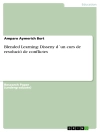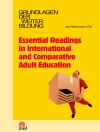This book analyses the role of universities as critical actors in the socio-economic development of peripheral regions in Norway and the Czech Republic. Examining the ambiguities of the traditional mission of a university in comparison to contemporary demands, the editors and contributors move past single-case analyses to adopt an integrated conceptual and analytical framework. The authors question whether universities can indeed ‘fix’ the conditions of any region they operate in, as is a common assumption, by examining peripheral regions, many of which have been devastated by natural or man-made disasters. Simultaneously acknowledging the complexities at the heart of both higher education institutions and regions, this book brings together a set of critical contributions that shed light on how universities can fulfil their role in peripheral regions rather than knowledge-intensive cities and towns. This uniquely researched book will be of interest to students and scholars of higher education, universities and communities, and education policy.
สารบัญ
Chapter 1. University Complexity and Regional Development in the Periphery.- Chapter 2. Geography vs University Functions-Regionally Based Networks: The Case of the Ústí Region.- Chapter 3. Designed for Regional Engagement? The Case of Telemark University College.- Chapter 4. Graduate Paradox at Jihlava: The Perspective of Stakeholders.- Chapter 5. Power, Institutions and Periphery: What can a small university college do?.- Chapter 6. Multiple Streams Running Dry: Third-Mission Policies at a Czech Research University.- Chapter 7. University Collaboration at a Cross-Road: Evolution and Tensions in Third-Mission Engagement.- Chapter 8. Conclusion
เกี่ยวกับผู้แต่ง
Rómulo Pinheiro is Professor in Public Policy and Administration at the University of Agder, Norway.
Mitchell Young is Assistant Professor in the department of European Studies at Charles University, the Czech Republic.
Karel Šima is Senior Researcher at Charles University, the Czech Republic.












